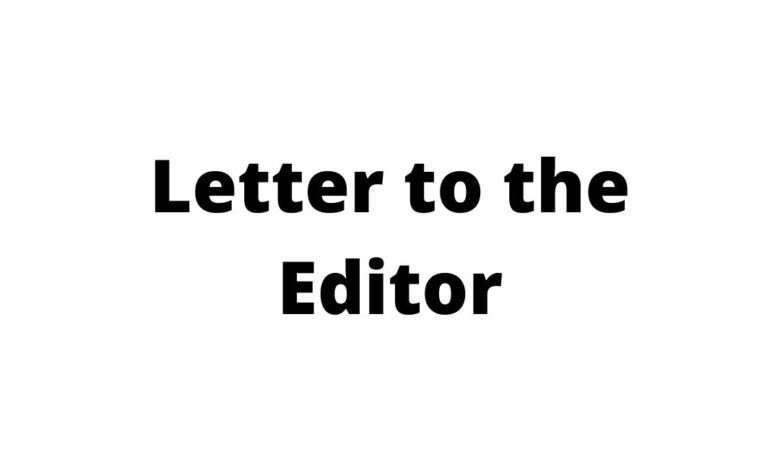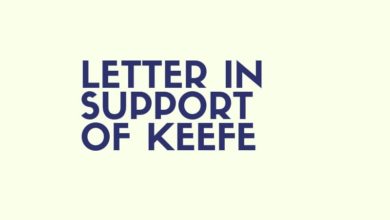Letter to the Editor: Keefe talks about Return to School vote

Editor:
On Monday, Oct. 19th, the Mahomet-Seymour Board of Education will be making yet another highly-consequential decision regarding the model of education provided by our district. This decision will have long-lasting impacts on the development and preparation of our children, as well as the short-term and long-term health of our children, families, and staff.
Additionally, this decision has other far reaching potential impacts. Many parents have been financially impacted or had their employment situations affected by the need to adapt child care plans. Many families have suffered through COVID-19 infections. Several of our staff have had to take leave or retire early due to the unacceptable personal risks of working during the COVID-19 pandemic. Many students, parents, and staff are struggling with the psychological hurt from isolation, anxiety about learning, fear about competing with other students for college admissions or scholarships, and depression from lack of social interaction with peers.
I see you. I believe you. I recognize the real hurt you are experiencing. You are not alone in this.
I expect that the meeting on Monday will be highly contentious. The board has been inundated by dozens of emails in just the past few days. All seven board members are doing the best we can to navigate this difficult situation. Each of us are working with the best intentions of serving our community, keeping our students safe, ensuring the best possible opportunities for them to grow and learn, and, all the while, keeping our staff safe and effective. The board must look at the data, hear the experts, hear the community that elected us, hear the students, teachers, and staff that rely upon us, and then make the best decision that we can. The best decision is not necessarily the most popular decision.
As we go into this meeting, I feel the need to explain my position beforehand. I don’t expect there will be an opportunity for me to express it as carefully and comprehensively during the meeting.
My highest priority is the safety and wellbeing of our entire community. Educational outcomes, extra-curricular activities, long-term financial health of the district, and the stable employment of our staff are all very important. But, these all come in second to safety.
As a board member, it is important that I recognize what I do not know. I must work hard to learn, ask questions, challenge ideas, and rely upon the input of experts to make the best decisions I can. I have learned much about public health, epidemiology, and the SARS-CoV-2 virus and COVID-19 disease it causes. However, I am NOT an expert. For this reason, my decision on Monday and going forward will heavily rely upon the guidance and direction of public health authorities and experts.
Unfortunately, in the era of fake news and personal facts, the next question is, “Which experts?” All sides of this debate in our community have provided long lists of experts, data, peer-reviewed papers, and even Facebook posts (🤦♂️) to the board in an effort to argue their position. I have done my best to carefully consider all of it. As I am not an expert, I lack the ability to determine which experts are the correct experts based simply on their work. I must instead rely upon scientific consensus and legal authority.
I look to the United States Centers for Disease Control and Prevention (CDC) for guidance on the best science on the pandemic itself and general recommendations for schools. I look to the Illinois Department of Public Health (IDPH) and its collaboration with the Illinois State Board of Education (ISBE) for regional assessment and state-level requirements demanded of all school districts in Illinois. Finally, I look to the Champaign-Urbana Public Health District (C-UPHD) for local guidance and requirements.
The CDC utilizes a continuum of risk as it relates to COVID-19. A fully virtual model, like what is being used in Champaign, Urbana, and Bloomington, is in the “lowest risk” category. The “some risk” category applies to what Mahomet-Seymour is doing in its K-5 grades because we are utilizing a hybrid model that rigorously cohorts our students in small groups while utilizing social distancing and other mitigation strategies to reduce the risk of virus transmission. Our 6-12 grades fit somewhere between the next two risk categories: “medium risk” and “higher risk.” I say this because we are utilizing a hybrid model, we have reduced our classroom sizes to about 40% of the normal student density, and we are working hard to ensure students are correctly protecting themselves and others with masks. However, we are not cohorting at the 6-12 levels, the students regularly mix as they churn through classrooms throughout the day while sharing desks, and the distance between pupils in an average classroom ranges between about 1-3 feet. The CDC recommends at least a 2 meter (a little more than 6 foot) distance.
The Illinois State Board of Education (ISBE) and Illinois Department of Public Health (IDPH) have issued joint guidance to school districts (addendum) with recommendations and requirements for the operation of schools during the pandemic. Unfortunately, the guidance is casually written as a frequently asked questions (FAQ) document with tons of wiggle room for everyone to argue their personal preference. Focusing just on social distancing requirements, here is what the guidance states (emphasis mine):
Are all individuals in a school building required to maintain social distance (remain 6 feet apart) at all times? (Updated 6/25/2020) Social distance must be observed as much as possible. Desks do not need to be spaced 6 feet apart; however, it is recommended that excess furniture be removed from classrooms to allow for as much space as possible in between desks.
The response is clearly a directive because it says “must” instead of “is recommended.” Unfortunately, the direction is to observe 6 foot spacing “as much as possible.” Well… That’s not very helpful.
My first inclination is that this is a direction with no direction. However, let us imagine that, one day, the district finds itself facing a lawsuit for negligence because a student has died from COVID-19 and the parents argue that the district did not follow the requirements of various public health authorities, including the IDPH. (This is a very real possibility! Our own attorneys and insurance providers have strongly encouraged the board to follow public health recommendations as much as possible!)
Picture a dedicated and honest Ms. Frizzle taking the stand. The lawyer for the parents asks, “Ms. Frizzle, did the school district observe 6 foot social distancing as much as possible?”
Ms. Frizzle responds, “Yes! At Mahomet-Seymour, we value a safe environment!”
“I see, so, the twenty students in your class were able to maintain a 6 foot distance?”
“No, it was about 3 feet, but that was as much as we could possibly maintain.”
“Thank you, Ms. Frizzle. Now, would it have been possible to somehow reduce the number of students in your class to ten? Maybe this could be accomplished through a hybrid learning model where some students attend remotely on a rotating schedule.”
“Well… Yes… I guess that would have been possible. Hmm, that would have allowed us to maintain a 6 foot distance! I guess we weren’t maintaining the recommended distance as much as possible.”
Thankfully, our local county health department has provided much clearer direction. The Champaign-Urbana Public Health District defines two types of statements in its guidance document, “best practices” and “recommendations.” Best practices are requirements that C-UPHD considers “the minimum level of implementation” and it states that “schools may not be less restrictive” for best practices. Best practice #1 states “Everyone must maintain AT LEAST 6 feet minimum distance from others at all times.”
Even though our district staff and administration have worked tirelessly to adapt our school operations, at 40% of normal student density, we are not able to maintain even 3 foot distance, let alone the 6 foot distance recommended by the US CDC and required by ISBE, IDPH, and C-UPHD. To consider transitioning to a 4 or 5 day operations plan, with about 90% normal student density is akin to rolling gas cans into an active house fire.
I will not support any change to our learning plan that takes us further away from public health authority guidelines. Instead, it is my desire that we adapt our learning plans to move closer to the recommendations and requirements of these expert authorities. We listen to public health when they assert requirements for food preparation in our schools. We listen to our fire inspectors when it comes to requirements for fire safety in our schools. We listen to our police when it comes to public safety incidents. In my opinion, it is unfathomable that we have so many people asking to ignore our public health authorities now.
Ken Keefe
Member, Mahomet-Seymour CUSD #3 Board of Education





